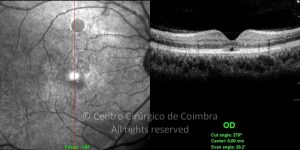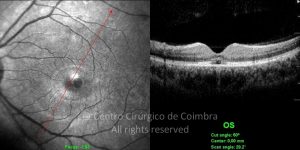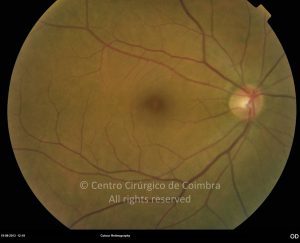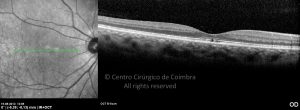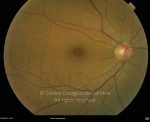Solar retinopathy is a retinal damage caused by unprotected long-term sun gazing, during a solar eclipse or on a normal day, Even with a constricted pupil, sustained solar observation for more than 90 seconds exceeds the threshold for photochemical retinal damage. It is common in young people under the influence of psychotropic drugs or in a religious ritual.
Symptoms include decreased vision, metamorphopsia, photophobia, dyschromatopsia, scotomas, headaches, and orbital pain 1-4 hours after solar exposure.
It is usually bilateral, but with a more serious lesion in the dominant eye. Initially the fundus is normal but 24 hours later presents as a small yellow-white foveolar lesion. The lesion may fade after a period of 1 to 2 weeks, and may be replaced by a foveolar depression or lamellar hole.
There is no treatment for solar retinopathy.
Most patients recover after a few weeks, and several months are required to regain regular vision. In severe cases, there is marked pigment clumping and only partial recovery of visual acuity.





